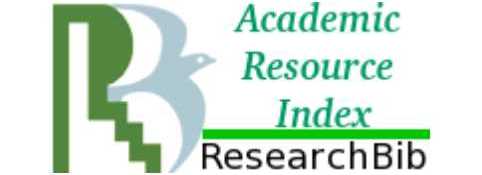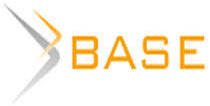Artificial intelligence in instructional design: an algorithm for forming educational results based on taxonomies
Introduction. The article explores the application of artificial intelligence (AI) in instructional design for shaping educational outcomes based on Bloom's and SOLO taxonomies. The study aim of the work is to develop the structure of a textual prompt and, based on it, an algorithm for generating adaptive practical cases that enable a combination of standardized assessment with personalized learning. The theoretical foundation of the research builds upon classical pedagogical taxonomies integrated with modern AI technologies. Materials and methods. The authors propose a prompt-engineering method that automates the creation of differentiated tasks tailored to students' cognitive levels and ensures their evaluation within a scoring-rating system. The method of prompt engineering enables exploring the possibilities of applying AI in the digitalization of instructional design. As a key example, the discipline “Custom Apparel Design for Enterprises of the Ivanovo Region” is examined: the authors demonstrate how AI generates tiered assignments (e.g., developing specialized clothing considering regional production requirements or designing eco-sustainable systems based on circular economy principles). Results. The study highlights that the proposed algorithm automates not only case creation but also their assessment, as evidenced by an experiment with six student submissions, where AI and instructor evaluations showed an 85% match rate.

















While nobody left any comments to this publication.
You can be first.
Alferyeva-Termsikos, V.B. (2024), “Promt-engineering as a strategy for forming the information culture of students”, International Journal of Humanities and Natural Sciences, 9-1 (96), 10-15. DOI: 10.24412/2500-1000-2024-9-1-10-15. (In Russian).
Batunova, I.V., Kokorina, S.V. and Tran, Thi Thu H. (2024), “Integration of digitalization into the educational process”, International Research Journal, 7, 1-5. DOI: https://doi.org/10.60797/IRJ.2024.145.97. (In Russian).
Valieva, R.R. (2020), “Individualization of education and problems of designing individual trajectories of personal and professional development in secondary vocational education”, Student science and the XXI century, 17, 1-2 (19), 276 – 279. (In Russian).
Glotova, M.Yu. and Samokhvalova, E.A. (2019), “Bloom's digital taxonomy and the model of digital transformation of education in the educational process of a university”, Informatics and education, 6, 42-48. DOI: https://doi.org/10.32517/0234-0453-2019-34-6-42-48. (In Russian).
Grigoriev, S.G., Sabitov, R.A., Smirnova, G.S. and Sabitov, Sh.R. (2020), “The concept of formation and development of a digital intellectual ecosystem of mixed university education”, Informatics and education, 5 (314), 15-23. DOI: 10.32517/0234-0453-2020-35-5-15-23. (In Russian).
Elsakova, E.Z, Kuzmina, N.N., Markus, A.N. and Kuzmina N.M. (2024), “Classification of neural networks for creating educational content by a higher education teacher”, Bulletin of the South Ural State University. Series: Education. Pedagogical Sciences, 2, 1729. DOI: 10.14529/ped240202. (In Russian).
Zykova, T.V., Weinstein, Yu.V. and Noskov, M.V. (2025), “Assessment of Learning Outcomes in E-Learning Systems Based on Bloom’s Taxonomy”, Novyye obrazovatelnyye strategii v otkrytom tsifrovom prostranstve: sbornik nauchnykh statey po materialam mezhdunarodnoy nauchno-prakticheskoy konferentsii (New Educational Strategies in an Open Digital Space: Collection of Scientific Articles from the International Research-to-Practice Conference), St. Petersburg, Russia, 51-56.
Kovalenko, E.S. and Kuzub, N.M. (2020), “Using Bloom's taxonomy to improve the quality of professional training of students of a pedagogical university”, Kazan Pedagogical Journal, 1, 90-96. DOI: 10.34772/KPJ.2020.138.01.012. (In Russian).
Komarova, E. (2025), “Prompt choice for large language models: Business communications”, Philology and Culture, 1, 66-74. DOI: https://doi.org/10.26907/2782-4756-2025-79-1-66-74. (In Russian).
Kuzmin, N.N., Glazunova, I.N., Chistyakova N.A. and Baytimerova L.S. (2024), “Artificial intelligence and its role in building an individual development trajectory for students in universities”, Education Management: Theory and Practice, 3-1, 113-121. DOI: https://doi.org/10.25726/f3942-2092-6900-m. (In Russian).
Lukinsky, I. S., Gorsheneva, I. A. (2024), “Promt engineering in the educational process and scientific activity or to the question of the necessity of training to work with artificial intelligence”, Psychology and pedagogy of service activity, 4, 148-154. DOI: https://doi.org/10.24412/2658-638Х-2024-4-148-154. (In Russian).
Lyakhova, E.G., Sakharov, Yu.A., Kovalenko, N.Yu. and Filicheva, O.S. (2025), Artificial Intelligence in Linguistic Space: A Monograph, Ed. by Yu.A. Sakharov, IP Vorontsov M.Yu., Moscow, Russia.
Smirnov, D.A. and Sakharova, N.A. (2025), “Pedagogical design of teaching models using artificial intelligence technologies: a comparative analysis”, Problems of modern pedagogical education: a collection of scientific papers, 87, 387-391. (In Russian).
Timofeeva, V.I. “Organization of the educational process for students of non-economic specialties: aspects of Bloom's hierarchical model”, International Journal of Humanities and Natural Sciences, 2-3, 74-76. DOI:10.24412/2500-1000-2025-2-3-74-76. (In Russian).
Toktarova, V.I. and Rebko, O.V. (2024), “Prompt-engineering as a digital educator's competence: new challenges and opportunities”, Novyye obrazovatelnyye strategii v otkrytom tsifrovom prostranstve: sbornik nauchnykh statey po materialam mezhdunarodnoy nauchno-prakticheskoy konferentsii [New Educational Strategies in an Open Digital Space: Collection of Scientific Articles from the International Research-to-Practice Conference], St. Petersburg, Russia, 306-312.
Biggs, J.B. and Collis, K.F. (1982), “Evaluating the Quality of Learning: The SOLO Taxonomy (Structure of the Observed Learning Outcome)”, Academic Press, New York, USA.
Bloom, B.S. (1994), “Taxonomy of educational objectives: The classification of educational goals: Handbook I, cognitive domain”, Longman, New York, USA.
Bsharat, S.M., Myrzakhan, A. and Zhiqiang, S. (2024), “Principled Instructions Are All You Need for Questioning LLaMA-1/2, GPT-3.5/4”, arXiv:2312.16171, 2, 1-23. DOI: https://doi.org/10.48550/arXiv.2312.16171.